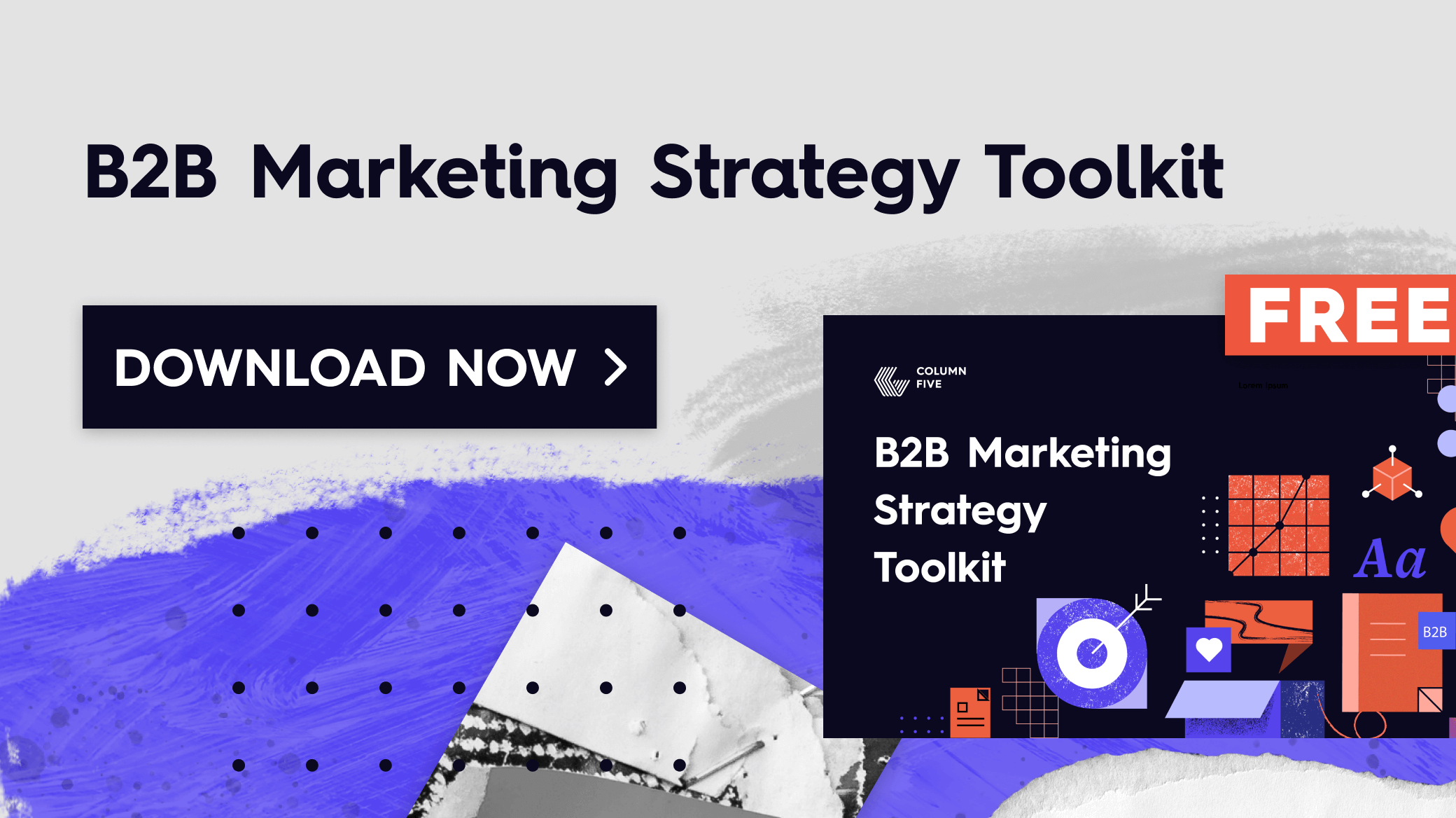As a SaaS marketer, you want to do marketing the right way. You want to know your audience, create content that connects with them, distribute it through the right channels, and watch your audience convert one by one. But successfully marketing (and selling) your product doesn’t start with your content. In fact, your content is simply the public-facing manifestation of the single most important thing you need to survive in the marketplace: your brand.

Why Brand Matters Most (Especially in SaaS)
Time and time again, clients come to us thinking they just need a new content strategy. But more often than not, when we start to dig into their current content strategy to seek clarity and understand their goals, the more we try to understand (and ask them to articulate) who they are and what they’re trying to achieve, the more they struggle to give us a definitive answer. Why? Because they have not taken the time (or have not had the support) to properly build a brand that can stand on its own.
Too many SaaS companies are focused on product when they should be focused on brand.
Granted, building a brand takes time, investment, and hours of deep work. But if you want to own your market, it is the only way to succeed for several key reasons.
1) Brand is the only way to differentiate in SaaS.
You can spend all the money in the world on product innovation, and a copycat will introduce the same product six months later. The truth is, developing a product and launching a company has never been easier. Hence, there’s more competition than ever—and it will only continue to get worse.
If you want to win, you have to differentiate effectively.
- But how can you win if your buyers can’t pick you out of a lineup?
- How can you win if people see your brand as not an investment but an expense?
- How can you win if, at the end of the day, people feel no emotional connection to you?
When product alone won’t help you compete, building a strong brand is the only way to differentiate in an effective and sustainable way—because it’s the only thing you can offer that is truly irreplicable.
This is why an inferior product with a superior brand will beat a superior product with an inferior brand 9 times out of ten.
Note: Building a brand isn’t only important to attract customers; it’s also crucial to attract and keep talent. Find out more about how investing in your employer brand can help you succeed.
2) Content is ineffective if it’s not aligned to the brand.
We are living in an era of content shock, where consumers are flooded with a stream of thought leadership. And this level of content production is exhausting for, frankly, everyone. Marketers are struggling to produce that high volume of content. Consumers are overwhelmed and don’t know where to turn to, who they should trust, or how to wade through the sea.
71% of decision-makers say that half or less than half of the thought-leadership content they read or watch gives them any sort of valuable insights.
—2022 Edelman Thought Leadership Study
SaaS marketers continue to blindly churn out content, but when it doesn’t reflect the brand, or isn’t aligned to the brand’s goals, this content cannot succeed. It will not speak to the right audience, deliver the right message, or move people along the path to purchase. If the Pareto principle is true, that only 20% of input results in 80% of output, then more content is not the answer; however, more tailored content is. But you can’t create more effective content if you don’t have a strong brand foundation guiding your strategy.
Note: Not sure if your brand and content strategy are aligned? Here’s how to find out.
3) Buyers want the brand story—not just the brand product.
B2B buyer behavior is changing.
- People want rich digital experiences.
- They don’t want to be hand-held by sales reps.
- They want to navigate content on their own and—above all—feel good about supporting a brand.
In SaaS marketing, the price tag is quite high. There is a tremendous amount of pressure on individuals to spend their budget wisely, so they want to be incredibly sure and confident in the brand they choose to buy from.
People don’t want to be sold to, but they love to buy.
—Jeffrey Gitomer
If you want to win their hearts and minds, sharing your brand story (through content) is the best way to stand out, connect with your audience, and build a relationship. But if you don’t have a strong brand, clear principles, and an articulated story, you can’t do that effectively through content.
Note: If you want inspiration to better connect with your audience, find out how to tell a brand story that resonates.
How to Build a Brand to Succeed In SaaS Marketing
The good news is that you can build a brand that will help you win your market; you just need to focus getting your house in order. This requires diligence and discipline. And, yes, in a dream world, every company would build their brand first and craft their marketing strategy after. Realistically, this work will happen concurrently, and that’s OK.
When you’re ready to undertake this deep work, focus on nurturing the three elements of your brand:
- Brand Heart: Use our free workbook to identify your Brand Heart (aka purpose, vision, mission, and values) and articulate them to the world.
- Visual identity: A consistent visual identity is the secret to standing out from your competition. Use our free toolkit to build an identity that accurately reflects who you are.
- Brand messaging. To tell a good brand story, you need to use consistent messaging. Use our free framework to hone in on your tagline, value prop, and key story pillars.
Note: If the idea of digging into this work alone feels intimidating, find out what it’s like to work with us on a brand strategy.
Ultimately, once you get these things dialed in, the next step is to test, tweak, and iterate based on market feedback (or lack thereof). You’ll know traction once you get it. From there it becomes less about changing things and more about doing what works, doing less of what doesn’t work, and leaving some healthy time and space to try new things. If you’ve done this legwork, you can be assured that the content you do create will be 100% more effective in helping you sell—even if you’re creating less of it.





